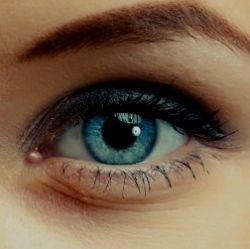
A procedure to regenerate the eye has successfully treated children with cataracts in China. More than half of all cases of blindness are caused by cataracts, the clouding of the eye’s lens. An implanted lens is normally needed to restore sight, but the operation described in Nature activated stem cells in the eye to grow a new one.
Experts describe the breakthrough as one of the finest achievements in regenerative medicine. The lens sits just behind the pupil and focuses light on to the retina. About 20 million people are blind because of cataracts, which become more common with age, although some children are born with them.
Conventional treatment uses ultrasound to soften and break up the lens, which is then flushed out. An artificial intraocular lens must then be implanted back into the eye, but this can result in complications, particularly in children.
The technique developed by scientists at the Sun Yat-sen University and the University of California, San Diego removes the cloudy cataract from inside the lens via a tiny incision.
Crucially it leaves the outer surface, called the lens capsule – intact. This structure is lined with lens epithelial stem cells, which normally repair damage. The scientists hoped that preserving them would regenerate the lens. The team reported that tests on rabbits and monkeys were successful, so the approach was trialled in 12 children.
Within eight months the regenerated lens was back to the same size as normal. Dr Kang Zhang, one of the researchers, told the BBC News website: "This is the first time an entire lens has been regenerated. The children were operated on in China and they continue to be doing very well with normal vision."
It also showed a dramatically lower complication rate "by almost every measure, supporting the superiority of the treatment". However, he says larger trials are needed before it should become the standard treatment for patients.
